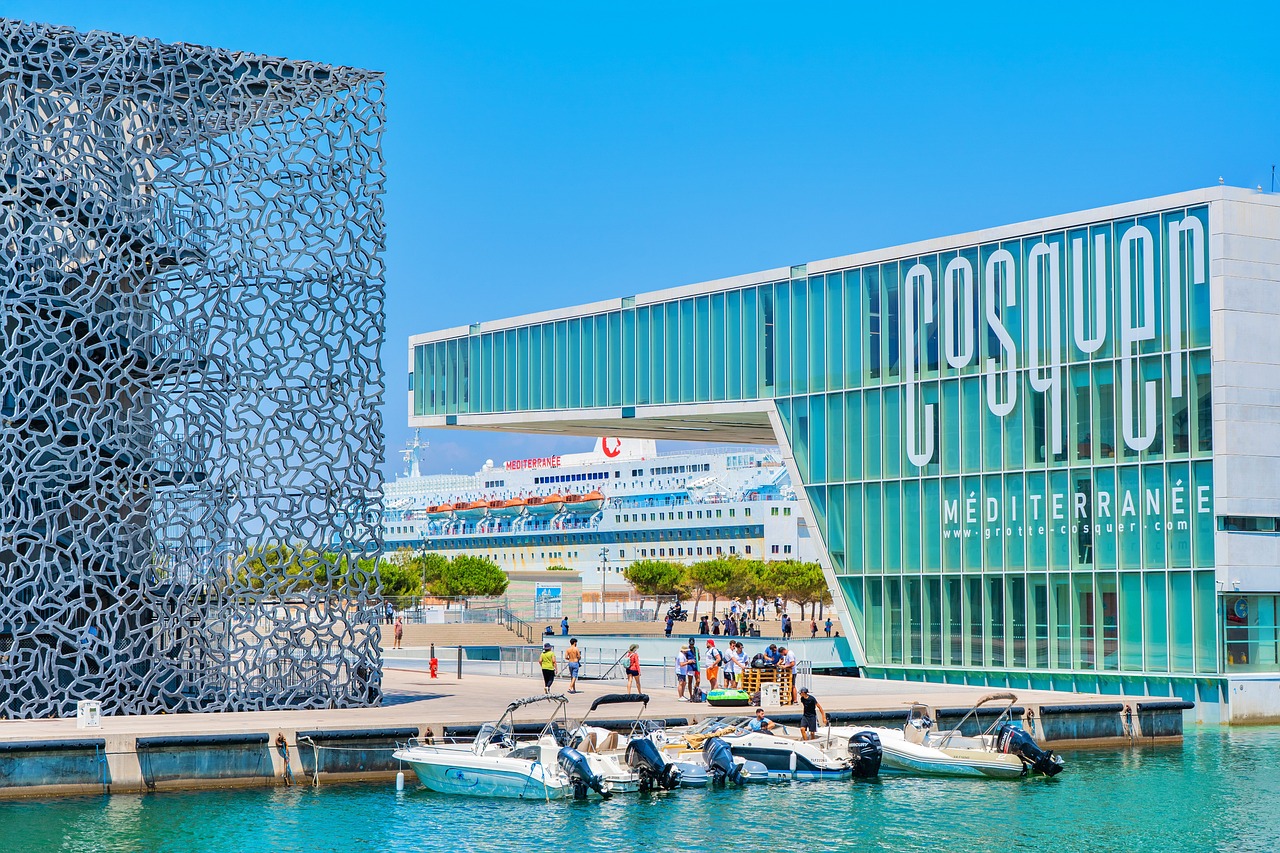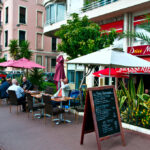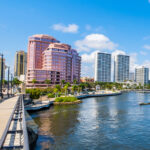Marseille, the pulsating heart of the French Mediterranean, boasts a rich tapestry of history, culture, and an indomitable spirit. Founded by the Greeks around 600 BCE as Massalia, Marseille is not only the oldest city in France but also the second largest, after Paris. It has been a crossroads of immigration and trade for centuries, creating a vibrant melting pot that is reflected in its unique culture, cuisine, and architecture.
History and Culture
Marseille’s history is as colorful as the facades of the buildings that line the Vieux Port (Old Port). The city has seen Greek settlers, Roman rulers, medieval counts, and waves of immigrants from Italy, North Africa, and the Middle East. Each of these peoples has left an indelible mark on the city’s culture and heritage, creating a mosaic that is distinctly Marseillaise.
One cannot discuss Marseille without acknowledging its role as a port. As the primary French Mediterranean port, it has been a gateway for goods, ideas, and people. The city’s economy has historically been tied to its port activities, which continue to play a critical role today. This long-standing status has imbued Marseille with a sense of openness and receptivity to the new and the foreign, traits that have greatly contributed to its dynamic cultural scene.
Vieux Port and Le Panier
At the heart of the city lies the Vieux Port, where fishermen sell their catch along the quai, and pleasure boats bob alongside working vessels. This area is a favorite spot for both locals and tourists, offering stunning views, bustling cafes, and the starting point for boat tours to the Calanques – a series of rugged limestone coves that are among the city’s natural wonders.
Just uphill from the Vieux Port is Le Panier, the oldest quarter of Marseille, which has become a hub of art and creativity. The narrow streets and colorful buildings are home to artists’ workshops, quaint bistros, and shops selling local crafts. This neighborhood’s charm lies in its unpolished authenticity; clotheslines stretch across alleys and the scent of freshly baked bread drifts from traditional boulangeries.
Notre-Dame de la Garde
Dominating the skyline is Notre-Dame de la Garde, a 19th-century basilica that sits atop a limestone outcrop to the south of the Old Port. Locally known as “la bonne mère” (the good mother), the basilica is a protector of sailors and fishermen. The interior is as impressive as the exterior, with intricate mosaics and a sense of serene grandeur. The view from this height offers a panoramic vista of the city, the surrounding hills, and the Mediterranean Sea.
The MUCEM and Cultural Renaissance
A symbol of Marseille’s cultural renaissance is the Museum of European and Mediterranean Civilizations (MUCEM). This striking piece of contemporary architecture, made of latticed concrete, stands at the entrance of the harbor and is connected to the historic Fort Saint-Jean by a slender footbridge. MUCEM embodies the city’s modern pulse and its connection to the Mediterranean basin. Its exhibitions explore the complex tapestry of Mediterranean history and culture, emphasizing the dialogue between Europe and its neighboring civilizations.
Cuisine
Marseille’s culinary scene is as diverse as its inhabitants. Bouillabaisse, the city’s most famous dish, is a testament to its seafaring heritage. This hearty fish stew is made with a variety of local seafood, including red rascasse, sea robin, and European conger, and is flavored with fennel, saffron, and orange zest. It represents the melting pot that is Marseille, combining ingredients and influences from various cultures that have passed through the port.
Beyond bouillabaisse, one can savor other local specialties like aioli, a garlic-laden emulsion that accompanies fish and vegetables, or navettes, boat-shaped biscuits flavored with orange blossom. The North African influence is also prevalent, with couscous and tagines featuring prominently on menus throughout the city.
Challenges and Resilience
Marseille is not without its challenges. It has struggled with a reputation for being rough around the edges, with issues of crime and poverty in certain neighborhoods casting a shadow over its many positives. However, the city has shown remarkable resilience and is actively working to overcome these challenges through cultural projects, urban renewal, and community initiatives.
Marseille is a city that defies easy categorization. It is French, yet distinctly Mediterranean; ancient yet vibrant with modern energy. Its complex history is the foundation for its rich cultural life, with influences from around the Mediterranean and beyond. Marseille’s natural beauty, from the limestone cliffs of the Calanques to the turquoise waters of the Mediterranean, only adds to its allure.
For travelers willing to look beyond the surface, Marseille offers a wealth of experiences. From the charm of the Vieux Port to the grandeur of Notre-Dame de la Garde, from the cutting-edge MUCEM to the bustling markets of Noailles, Marseille is a city that reveals its treasures to those who take the time to explore its streets and engage with its people. It is a city that embodies the spirit of survival and the joy of life, making it an essential stop for anyone seeking to understand the soul of the Mediterranean.
The Heart of Soccer: Olympique de Marseille
In Marseille, football is not just a sport; it’s a religion, and its temple is the Stade Vélodrome. Home to Olympique de Marseille, the city’s premier football club, the stadium roars with the passion of its fans, known as “Les Ultras”. The team has a storied history, having won the UEFA Champions League in 1993, the only French club to have done so. The fervor for football in Marseille transcends the game itself, symbolizing the pride and unity of a city that often stands apart from the rest of France due to its unique identity.
The Diverse Districts of Marseille
Each district in Marseille has a character and life of its own. Cours Julien, with its street art, hipster cafes, and boutique shops, is the heartbeat of Marseille’s bohemian life. La Plaine, with its famous market, reflects the traditional side of Marseillaise life, where locals bargain for fresh produce and regional products.
The Noailles district is often referred to as the ‘belly of Marseille’ due to its vibrant market and the diverse range of food reflecting the city’s immigrant heritage. Here, the air is perfumed with the scent of spices and the sounds of a dozen languages meld into the market’s hubbub.
The Calanques National Park
On the outskirts of the city lies the Calanques National Park, an area of wild natural beauty that has become a haven for hikers, climbers, and nature lovers. The calanques themselves, fjord-like inlets carved into the white limestone cliffs, provide a stark contrast to the urban energy of Marseille. The national park, which stretches over 20 kilometers between Marseille and Cassis, is home to unique flora and fauna, and its clear waters are a magnet for swimmers and sailors alike.
Challenges of Modern Marseille
The social fabric of Marseille is constantly evolving. The city has faced significant challenges in integrating its diverse population, dealing with economic disparities, and combating crime rates that are often magnified by the media. Marseille’s response has been proactive, with a focus on community policing, social programs, and urban redevelopment efforts aimed at improving the quality of life for all its residents.
One of the most significant redevelopment projects has been the transformation of the docks and the Joliette area, which have been turned into a thriving business and cultural district, showcasing how Marseille is reinventing itself for the 21st century.
The Influence of Art and Literature
Marseille has also been a muse for artists and writers, who have been drawn to its gritty charm and cultural tapestry. The city’s complexity and contradictions have inspired works such as Jean-Claude Izzo’s “Total Chaos,” the first of the Marseilles Trilogy, which paints a noir picture of the city, capturing its rough edges and the loyalty of its inhabitants. Artists like César Baldaccini have used the city as both subject and material, contributing to the rich tapestry that is Marseille’s cultural scene.
Marseille: A Gateway to Provence
Marseille serves as the gateway to the wider region of Provence, with its lavender fields, vineyards, and picturesque villages. The city’s rail and road connections make it an ideal starting point for exploring the Provençal landscape and the French Riviera. The connection between the urban vibrancy of Marseille and the pastoral beauty of Provence offers a journey through contrasting worlds that are quintessentially French yet marked by a distinctive southern character.
Marseille Today
In recent years, Marseille has seen a surge in cultural and economic investment, leading to a renaissance that has polished some of its rougher edges without compromising the city’s raw energy. The repurposing of industrial spaces into cultural venues, investment in public transportation, and the ongoing redevelopment of the waterfront are all signs of a city looking toward the future while honoring its past.
Marseille is a city of paradoxes, as beautiful as it is complex, as historic as it is dynamic. It embodies the essence of the Mediterranean, with a character shaped by millennia of trade, migration, and cultural exchange. For those who visit Marseille, the city offers not just a glimpse into the soul of Southern France, but also into the human spirit — resilient, diverse, and vibrant. It’s a place where the sun-drenched shores meet the hustle of port life, where ancient history brushes shoulders with a modern metropolis. Marseille is a city that doesn’t just invite exploration; it demands it. In its labyrinthine streets and sunbaked squares, every corner turned reveals another layer, another story, another reason to fall in love with this city by the sea.







